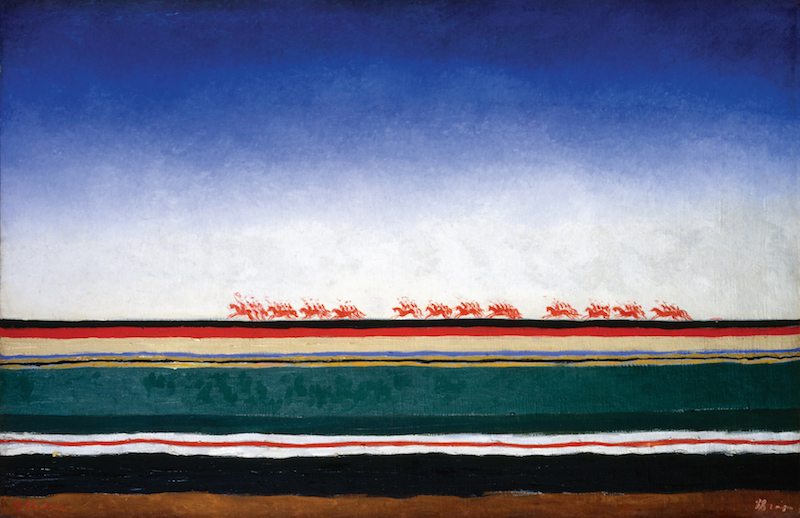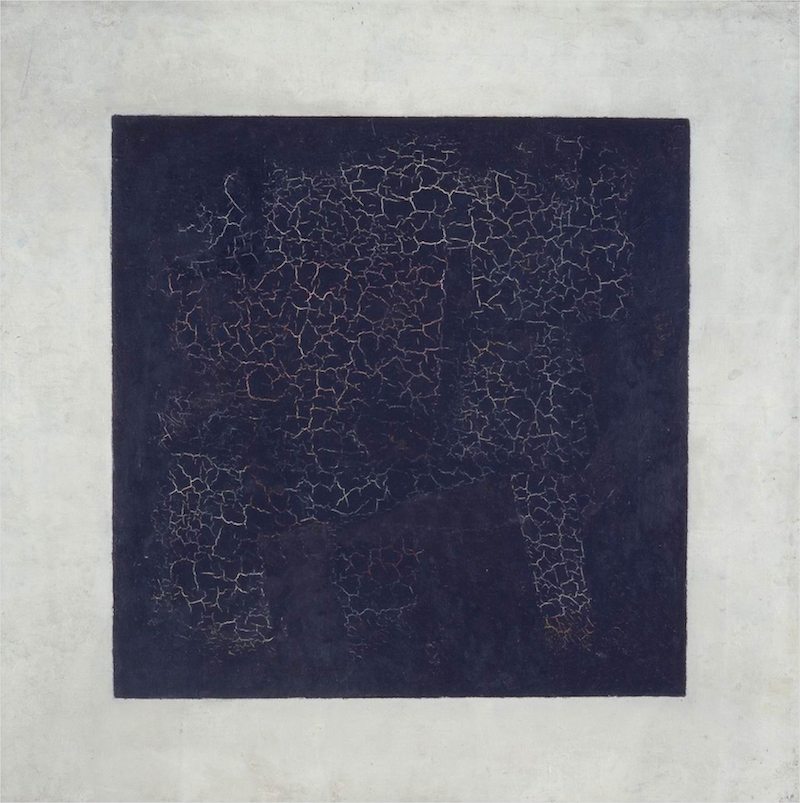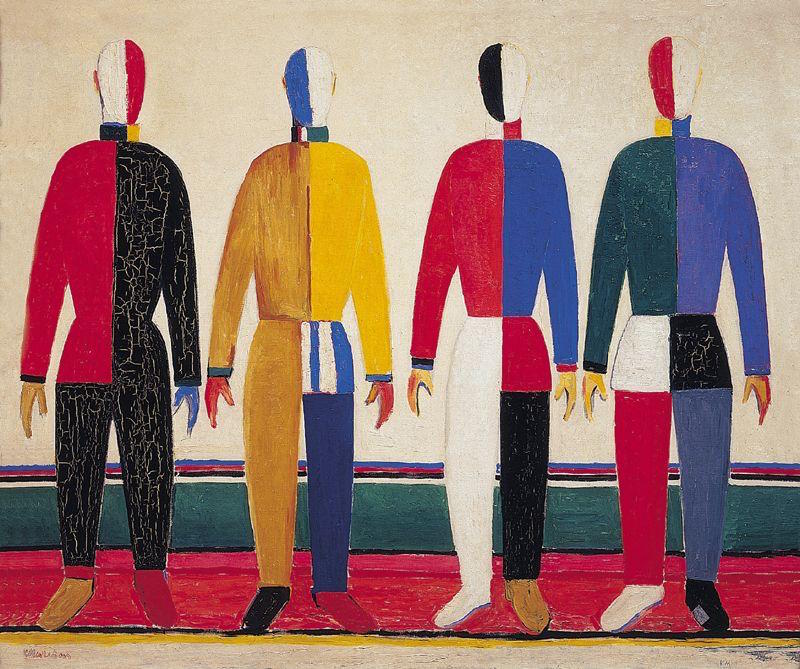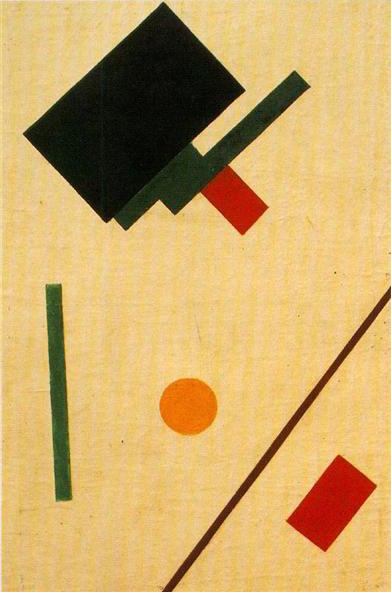Kazimir Malevich
Episode #9 of the course “Prominent artists of Modern Art”
Russian painter and writer Kazimir Malevich was known for his works that focused on the importance of shapes and forms and the relationships between them in the space of a painting. His radical style of Suprematism laid the foundation and became heavily influential for schools of Abstract art around the world. Born in 1879, he studied at the Moscow School of Painting, Sculpture, and Architecture before joining the famous school of Moscow artists at the studio of Fedor Rerberg.
 Red cavalry
Red cavalry
Inspired by Cubism, Malevich published a manifesto in 1915 called From Cubism to Suprematism in which he described his ideals of a focus on form and geometry and a downplay of the importance of color in art. His painting from the same year, Black Square, garnered much attention and discussion in the art world for its symbolism and basic technique. It became the ultimate symbol for people looking to express deep psychological anxieties but was criticized for being disconnected from ideas of beauty.
 Black Square
Black Square
 Spotrsmeny
Spotrsmeny
When Russia was struck with revolution in 1917, Malevich painted less but remained connected to the art world through his writings and illustrations for books, magazines, and other publications. He continued to formulate theories of Suprematism, later published in the collective The World as Non-Objectivity. In order to be tolerated in the political atmosphere of the time that favored socialist realism, Malevich quieted some of his more radical theories. He was later banned when his art was deemed to be “bourgeois” and not depicting the social reality. Until his death from cancer in 1935, Malevich continued to believe in art for art’s sake and not simply as a representation of what the artist sees.
 Suprematist composition
Suprematist composition
Share with friends

